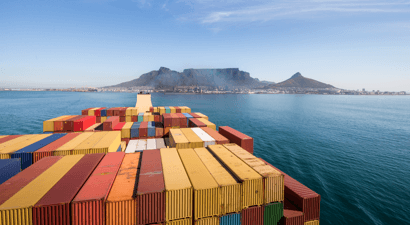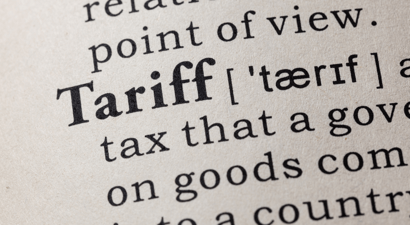Overview of the Transnet National Ports Authority (TNPA) Tariff Application for 2016/2017
Section 72(1)(a) of the National Ports Act No. 12 of 2005 ("the Act") requires the Transnet National Ports Authority ("TNPA") to determine the tariffs for the services and facilities it offers each year but requires those tariffs to be approved by the Regulator. In determining the tariff, TNPA is bound by the Regulator's prescribed Tariff Methodology issued in July 2014. The Methodology applies to the 2015/2016 to 2017/2018 tariff years and allows for the annual review and adjustment of the tariffs as opposed to fixing them for the full period. The tariff application for the 2016/2017-tariff year has been published for public comment (TNPA Tariff Application 2016/2017) and any interested parties are invited to attend the TNPA Roadshows and submit written representations by 16 October 2015.
The TNPA, like any port authority, generates revenue by charging for use of port infrastructure and providing services to port users. According to the 2016/2017-tariff application, the TNPA has applied for revenue of R11 895 million, which translates into a weighted tariff increase of 5.90%, and which is in line with the current inflation rate.
In dealing with the Regulator's tariff strategy (Ports Regulator Tariff Strategy 2015/2016) and in order to continue tariff rebalancing and reduce cross-subsidization, the TNPA has proposed differentiating tariff increases in order to fairly allocate costs to all port user groups according to the principle of "cost orientation". Cost orientation means that each service should be priced according to the underlying cost of providing that service and that users benefiting directly from the use of the service should cover this cost.
An increase of 6.80% is envisaged for marine charges (paid by shipping lines) such as use of tugs and berthing and pilot assistance. A reduced increase of 5.60% is proposed for cargo dues applicable to Containers, Automotive, Break and Liquid Bulk (please refer to Table). The average tariff adjustment for the 2015/2016 to 2017/2018 tariff years is expected to be 7.81%, which is in line with that previously communicated to stakeholders at the launch of Transnet's Market Demand Strategy in 2012. According to current forecasts, shipping lines can expect an annual real increase of approximately 7.2%, but this will be reviewed annually and reflected in the tariff determination.
|
Details |
FY 2015/1 Revenue Latest Estimate R million |
FY 2016/17 Weighted Average Revenue Volume Increase % |
FY 2016/17Revenue: Volume Increase R million |
FY 2016/17 Revenue: Tariff Increase R million |
FY 2016/17 Weighted Average Revenue Tariff Increase % |
FY 2016/17 Revenue Budget R million |
|
Containers Automotive Break Bulk Dry Bulk Liquid Bulk |
3 870 582 282 1 184 591 |
3.5% -2.0% 3.7% 4.7% 2.8% |
135 (12) 10 56 17 |
224 32 16 72 34 |
5.60% 5.60% 5.60% 5.81% 5.60% |
4 228 602 309 1 312 641 |
|
TOTAL CARGO DUES AFTER REBATE |
6 508 |
3.2% |
206 |
379 |
5.64% |
7 092 |
|
Marine & other revenue |
2 063 |
0.0% |
(1) |
140 |
6.80% |
2 203 |
|
TOTAL TARIFF BOOK REVENUE |
8 571 |
2.4% |
205 |
519 |
5.91% |
9 295 |
|
Real estate revenue |
2 407 |
8.0% |
193 |
|
|
2 600 |
|
TOTAL REVENUE |
10 978 |
3.6% |
398 |
519 |
|
11 895 |
Table 1
Port tariffs are invariably influenced by the global economic outlook and forecasted volume growth. The economic slowdown within South Africa's major trading partners is expected to impact both container volumes and break bulk exports. The weakening Chinese economy traditionally relied on large investment projects and heavy industry that fueled the demand for South African coal and iron ore exports. The continuing commercial risk within the liquid bulk industry coupled with a volatile Rand exchange rate has led to declining margins. But the forecast for the 2015/2016 tariff year is still positive with the TNPA estimating an overall increase in volume of 3% across all cargo types.
The Regulator's Tariff Methodology requires TNPA to apply a zero sum game subject to the claw-back provisions ensuring that TNPA and port users don't benefit or suffer from discrepancies between forecasts and the actual numbers. TNPA says that it has taken account of over-recovery in 2014/2015 and a projected surplus in the 2015/2016 tariff periods in the 2016/2017-tariff application and that this has resulted in the reduction of the proposed weighted tariff increase from 15.91% to 5.9%.
TNPA also says that it continues to implement its Market Demand Strategy in order to ensure the development of port infrastructure capacity ahead of demand and re-iterates its support for the South African government's economic objectives regarding beneficiation and export competitiveness by incentivizing value-adding activities. In accordance with these objectives, the TNPA has submitted a tariff adjustment in line with inflation for 2016/2017 whilst attempting to smooth the tariff trajectory for future years.
We will be attending the Tariff Roadshow in Durban on 1 October 2015 and will keep you updated.
Port tariffs have a critical impact on many industries and many of our clients. If you need any further information or would like to submit written representations to the Regulator about TNPA's proposed tariff adjustments please contact





